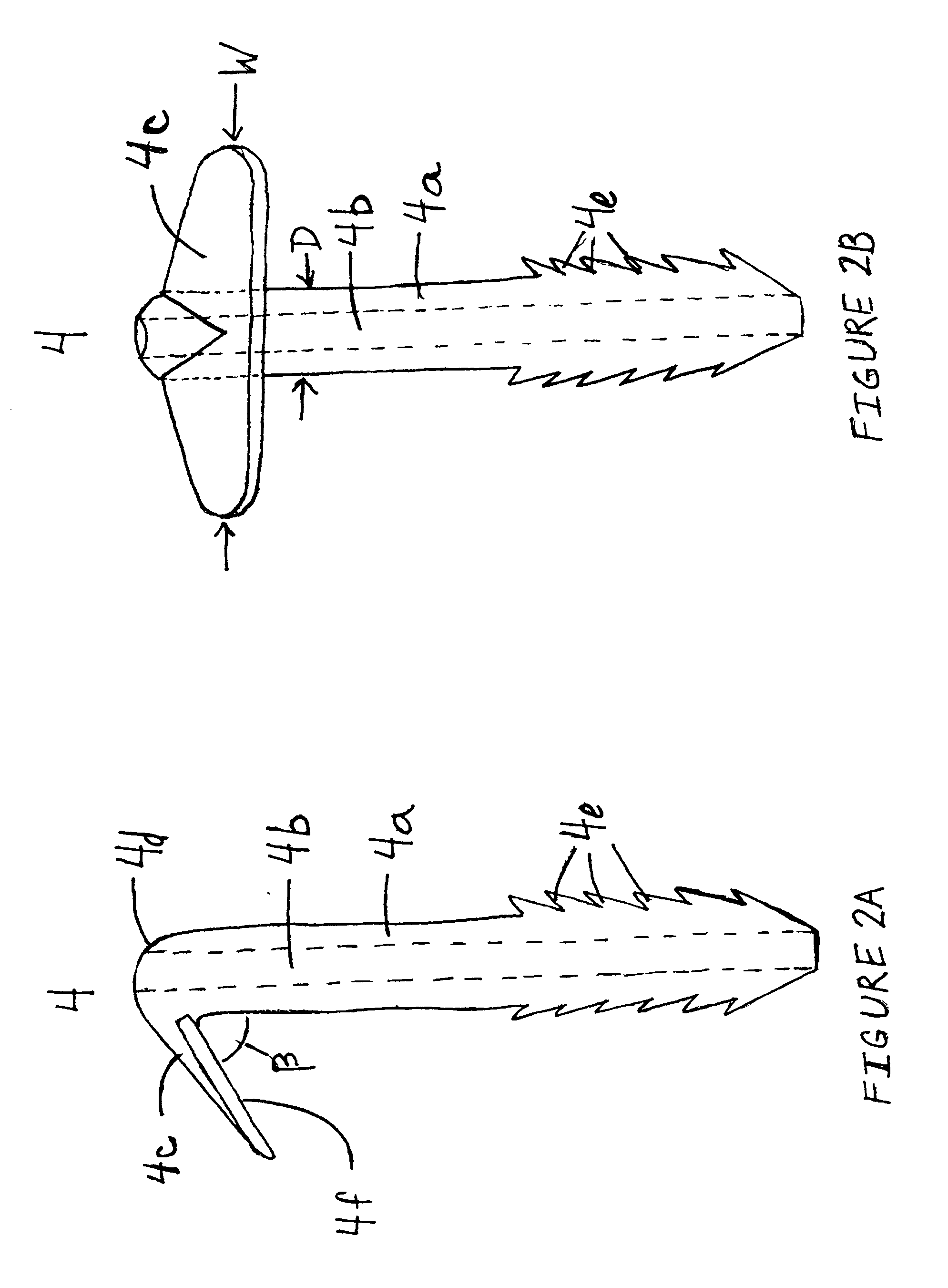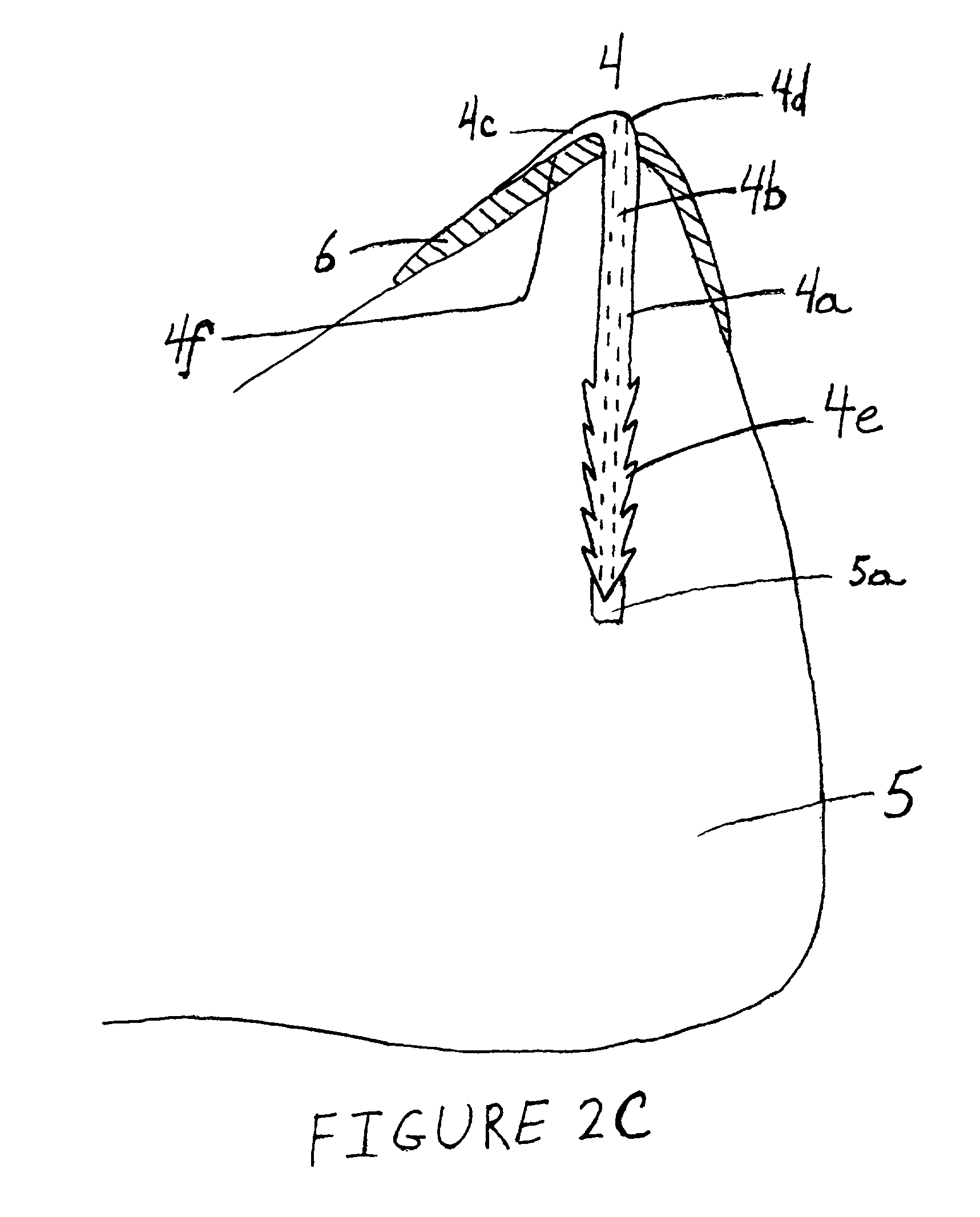Anatomical fixation implant
anatomical fixation and implant technology, applied in the field of anatomical fixation implants, can solve the problems of irritating the rim of the joint cavity, affecting the effect of the implant, and presently known bioabsorbable fixation implants for attaching soft tissue to bone, etc., and achieve the effect of advantageous surgical us
- Summary
- Abstract
- Description
- Claims
- Application Information
AI Technical Summary
Benefits of technology
Problems solved by technology
Method used
Image
Examples
Embodiment Construction
[0035] A single screw extruder was applied to manufacture a poly-L / DL-lactide (L / DL molar ratio 70 / 30, inh. viscosity 5.8 dl / g, trade name Resomer LR 708, manufacturer Boehringer Ingelheim, Germany) 8.6 mm thick cylindrical continuous billet, which was cooled to room temperature. The cooled billet was heated to 70.degree.C. and it was drawn to the draw ratio of 3 according to PCT / FI 96 / 00511, Example 1, the entire disclosure of which is incorporated herein by way of this reference, to increase the strength and ductility of the material. The final oriented part had the diameter of 5 mm. The oriented part was cut into rods of 40 mm length. A hole of diameter 1.1 mm was drilled through the rods along the long axis of the rods. A 10 mm long segment at the end of the rods was located between two heated steel plates (T=80.degree.C.) which were compressed to flatten the end of the rod to the thickness of 1 mm. At the same time the non-compressed part (shaft) of the rod was bent in relation...
PUM
 Login to View More
Login to View More Abstract
Description
Claims
Application Information
 Login to View More
Login to View More - R&D
- Intellectual Property
- Life Sciences
- Materials
- Tech Scout
- Unparalleled Data Quality
- Higher Quality Content
- 60% Fewer Hallucinations
Browse by: Latest US Patents, China's latest patents, Technical Efficacy Thesaurus, Application Domain, Technology Topic, Popular Technical Reports.
© 2025 PatSnap. All rights reserved.Legal|Privacy policy|Modern Slavery Act Transparency Statement|Sitemap|About US| Contact US: help@patsnap.com



